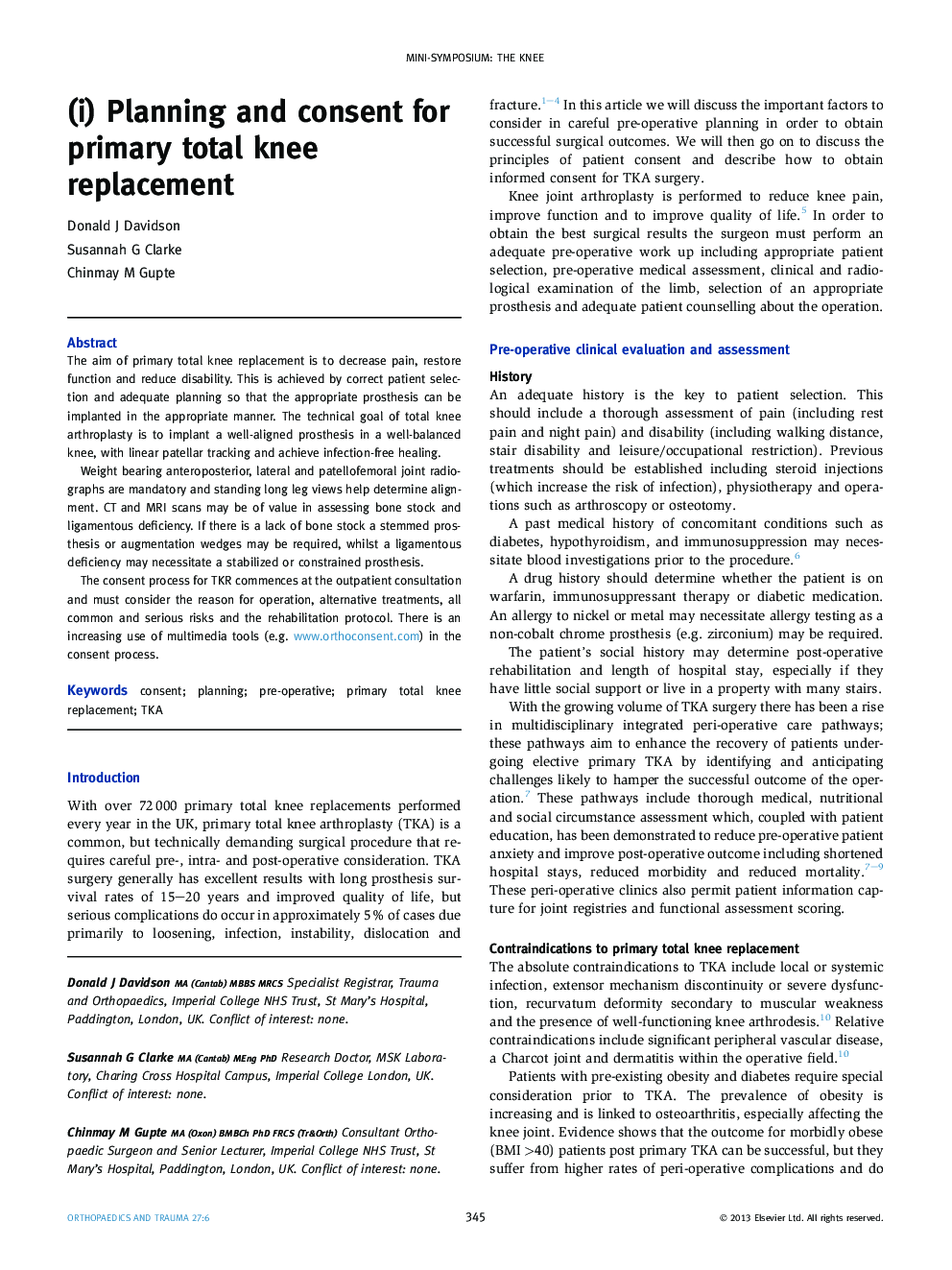| Article ID | Journal | Published Year | Pages | File Type |
|---|---|---|---|---|
| 4080394 | Orthopaedics and Trauma | 2013 | 10 Pages |
The aim of primary total knee replacement is to decrease pain, restore function and reduce disability. This is achieved by correct patient selection and adequate planning so that the appropriate prosthesis can be implanted in the appropriate manner. The technical goal of total knee arthroplasty is to implant a well-aligned prosthesis in a well-balanced knee, with linear patellar tracking and achieve infection-free healing.Weight bearing anteroposterior, lateral and patellofemoral joint radiographs are mandatory and standing long leg views help determine alignment. CT and MRI scans may be of value in assessing bone stock and ligamentous deficiency. If there is a lack of bone stock a stemmed prosthesis or augmentation wedges may be required, whilst a ligamentous deficiency may necessitate a stabilized or constrained prosthesis.The consent process for TKR commences at the outpatient consultation and must consider the reason for operation, alternative treatments, all common and serious risks and the rehabilitation protocol. There is an increasing use of multimedia tools (e.g. www.orthoconsent.com) in the consent process.
